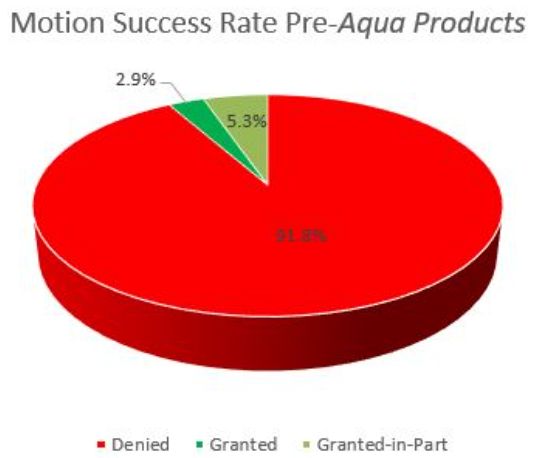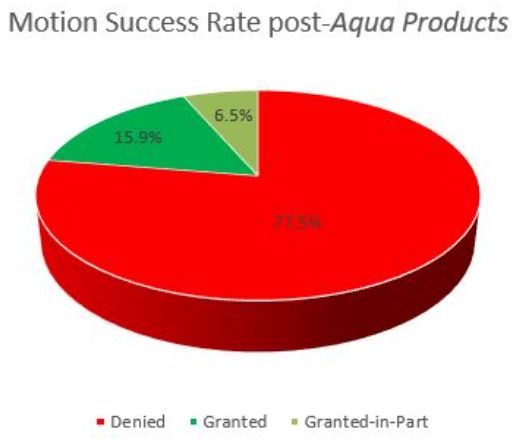When former President Barack Obama signed the Leahy-Smith America Invents Act into law on Sept. 16, 2011, the patent system in the United States underwent one of its most sweeping and significant overhauls. The AIA replaced the then-existing post-grant review proceeding of inter partes reexamination with several new proceedings known as inter partes review, post grant review and covered business method patent review.
Congress implemented AIA reviews to streamline disputes over patent validity, with the goal of reducing costs for all involved. One tool Congress provided to patent owners is the ability to amend claims during an AIA review should any of the original claims be found unpatentable. In theory, the amendment procedure provided patent owners a meaningful way to retain patent rights, even if it was more narrow, in light of prior art that invalidated the original claims.
In the infant years of AIA reviews, however, motions to amend were almost never granted because the Patent Trial and Appeal Board placed the burden on the patent owner to prove patentability, rather than keeping it on the challenger to prove unpatentability.
In October 2017, the U.S. Court of Appeals for the Federal Circuit in Aqua Products Inc. v. Matal shifted the burden by putting it back on the challenger to prove unpatentability. This article examines motions to amend post-Aqua Products, as well as other recent favorable trends for patent owners and motions to amend.
Motions to Amend Pre-Aqua Products
The AIA authorizes patent owners to file motions to amend.1 While a motion to amend is theoretically a tool available to patent owners, in practice, the PTAB rarely granted such motions. One of the major reasons for this was that the PTAB put the burden to prove the patentability of the proposed substitute claims on the moving party (i.e., the patent owner), even though the authorizing statute for AIA reviews put the burden to prove the unpatentability of the challenged claims on the petitioner.2
In practice, the burden of proving patentability was too high of a bar for most patent owners. This is not surprising considering that proving patentability involves proving a negative (i.e., no invalidating prior art exists).
In the timeframe between Sept. 16, 2012, when AIA reviews began, and Sept. 30, 2017, the PTAB decided 170 motions to amend.3 Of those 170, only five were granted in full, and an additional nine were granted-in-part, yielding a success rate of only 8.24%. The chart below illustrates the overwhelming ratio of rejections of motions to amend from Sept. 16, 2012 to Sept. 30, 2017:

Motions to Amend Post-Aqua Products
Aqua Products' Positive Effect on Motions to Amend
Enter the Federal Circuit's en banc ruling in Aqua Products Inc. v. Matal.4 In October 2017, the Federal Circuit materially changed the burden of proof associated with the patentability of amended claims during an AIA review. Because the statutory scheme required the petitioner to prove unpatentability in an AIA review, with no distinction between motions to amend or original claims, in Aqua Products, the en banc Federal Circuit shifted the burden from the patent owner seeking the amendment to the patent challenger opposing it.
This placement of the burden complies with the requirements of Title 35 U.S. Code Section 316(e), while the PTAB's previous practice did not. The PTAB recognized the effect of Aqua Products and applied it in Lectrosonics Inc. v. Zaxcom Inc.,5 which the U.S. Patent and Trademark Office has now proposed codifying in Title 37 Code of Federal Regulations Sections 42.121 and 42.221.6
Aqua Products was a monumental sea change in the law on motions to amend, but at the time it was not clear what effect, if any, it would have on the previously low success rate of motions to amend.
Two years have passed since Aqua Products was decided and patent owners have good reason to look back on the decision positively. In the first year following Aqua Products, the PTAB decided 35 motions to amend.7 Of those, three were granted, and four were granted in part, yielding a 20% success rate. This 20% success rate represents nearly a 150% improvement over the pre-Aqua Products success rate.
This positive trend appears to have staying power as well. Because the USPTO has not updated the public data on motions to amend past September 2018, we analyzed every AIA review before the PTAB after the time period covered by the USPTO Motion to Amend Study. During this period between Sept. 30, 2018 and Oct. 24, 2019 we found the PTAB decided 103 motions to amend. Of those, 19 were granted and 5 were granted in part, for a success rate of 23.3%.
Adding these cases to the USPTO Motion to Amend Study data brings the success rate of all cases after Aqua Products to 22.46%, a significant increase from the 8.24% success rate prior to the Aqua Products decision - nearly a 175% improvement. The chart below illustrates this significant improvement in the success rate of motions to amend post Aqua Products (from Oct. 5, 2017 to Oct. 24, 2019.

Other Favorable Trends for Patent Owners and Motions to Amend
Trends in motion to amend practice in AIA reviews continue to march in patent owner's favor. In addition to the burden shifting that resulted from Aqua Products, USPTO Director Iancu instituted other practices to ensure patent owners get a fair shake on motions to amend.
For example, in March 2019, the USPTO announced a pilot program for motions to amend.8 This program was born out of feedback received by the USPTO in response to its Oct. 29, 2018, request for comments on proposed procedures for motions to amend. The new motion to amend pilot program creates two new options for patent owners who wish to file a motion.
As a first option, a patent owner may choose to receive preliminary guidance from the PTAB on its motion to amend. The second option is that a patent owner may choose to file a revised motion to amend after receiving petitioner's opposition to the original motion to amend and/or after receiving the PTAB's preliminary guidance, if requested. It is perhaps too soon to draw any conclusions on the pilot programs' effect on motions to amend, but it is something we and the patent community at large are closely watching.
Reissue Applications
Post-Aqua Products motion to amend practice appears more favorable than pre-Aqua Products practice. But even a 23% success rate is less than ideal. Practitioners thus may also consider whether reissue applications are a preferred avenue for preserving patent rights after an AIA review finds claims unpatentable.
The USPTO recently provided guidance on how to get applications into reissue in an efficient manner after an AIA review.9 The guidance includes filing a notice of appeal after a final written decision issues, so that a trial certificate cannot be issued by the PTAB, then filing a reissue application, and finally dismissing the appeal after reissue application is filed. This is an effective strategy because a reissue application must be filed before the PTAB issues a trial certificate and a trial certificate cannot be issued while an appeal of a final written decision is pending before the Federal Circuit.
Conclusion
While patent owners have benefited from Aqua Products' correcting where the burden lies for motions to amend, the success rate for motions to amend is still low. Nevertheless, the uptick in the success rate of motions to amend coupled with the USPTO's intent on giving patent owners a fair shake are promising signs for patent owners seeking to amend claims of a patent challenged in an AIA review.
Additionally, motions to amend and reissue applications are cooperative tools in the patent owner's tool box, rather than one-size-fits-all solutions to AIA challenges. Patent owners intent on maintaining their patent rights by amending their claims should consider utilizing these tools to maximize their chance to obtain amended claims, including utilizing the following strategies:
- Invoking the pilot program to obtain insight into proposed amendments at the PTAB; and
- If an appeal is unlikely to succeed, filing a reissue application at the conclusion of an unsuccessful defense of an AIA review.
Going forward, rather than abandoning the use of motions to amend (which may have been the case pre-Aqua Products), patent owners should consider how motions to amend can be utilized as part of the patent owner's strategy to maintain patent rights challenged by AIA reviews.
Footnotes
1 35 U.S.C. § 316(d)(1).
2 See, e.g., Synopsys, Inc. v. Mentor Graphics Corp., 814 F.3d 1309 (Fed. Cir. 2016); Nike, Inc. v. Adidas AG, 812 F.3d 1326 (Fed. Cir. 2016); Microsoft Corp. v. Proxyconn, Inc., 789 F.3d 1292 (Fed. Cir. 2015).
3 Statistics from USPTO Motion to Amend Study, March 2019 update
4 Aqua Products, Inc. v. Matal, 872 F.3d 1290 (Fed. Cir. 2017).
5 Lectrosonics, Inc. v. Zaxcom, Inc., Cases IPR2018-01129, 01130 (P.T.A.B. Feb. 25, 2019) (Paper 15).
6 Daniel B. Weinger, et al., USPTO Proposes New Rules for Amending Claims During AIA Reviews Mintz Insights (2019), https://www.mintz.com/insights-center/viewpoints/2231/2019-10-uspto-proposes-new-rules-amending-claims-during-aia-reviews (last visited November 5, 2019).
7 Statistics from USPTO Motion to Amend Study, March 2019 update
8 84 FR 9497 (Mar. 15, 2019).
9 84 FR 16654 (April 22, 2019).
Originally published by Law 360 on November 20, 2019
The content of this article is intended to provide a general guide to the subject matter. Specialist advice should be sought about your specific circumstances.


